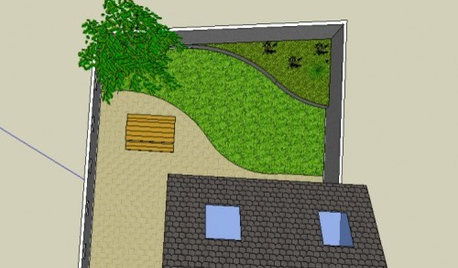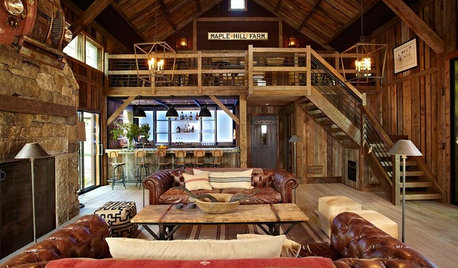Question on Raised Veggie Beds
memphistigerlily
16 years ago
Related Stories

FARM YOUR YARDHow to Build a Raised Bed for Your Veggies and Plants
Whether you’re farming your parking strip or beautifying your backyard, a planting box you make yourself can come in mighty handy
Full Story
HOUZZ TVHouzz TV: How to Make and Plant a Veggie Box
See how to start edibles from seed, then transfer the seedlings to a box on stilts to make harvesting more fun
Full Story
GARDENING GUIDES8 Materials for Raised Garden Beds
Get the dirt on classic and new options for raised vegetable and plant beds, to get the most from your year-round garden
Full Story
GARDENING AND LANDSCAPINGBuild a Raised Bed to Elevate Your Garden
A bounty of homegrown vegetables is easier than you think with a DIY raised garden bed to house just the right mix of soils
Full Story
SPRING GARDENINGInspiring Raised Beds for Fall and Spring Planting
Make Your Next Vegetable Garden Even Better with Beautiful Boxes and Paths
Full Story
DOORS5 Questions to Ask Before Installing a Barn Door
Find out whether that barn door you love is the right solution for your space
Full Story
FEEL-GOOD HOMEThe Question That Can Make You Love Your Home More
Change your relationship with your house for the better by focusing on the answer to something designers often ask
Full Story

FARM YOUR YARDAdvice on Canyon Farming From L.A.'s Vegetable Whisperer
See how a screened garden house and raised beds help an edible garden in a Los Angeles canyon thrive
Full Story
BARN HOMES12 Bar-Raising Barns
Homeowners make hay out of renovated, reclaimed and newly raised outbuildings
Full StorySponsored






brandon7 TN_zone7
atokadawn
Related Professionals
Arden-Arcade Landscape Contractors · Harvey Landscape Contractors · Lakewood Landscape Contractors · Lebanon Landscape Contractors · Lewisville Landscape Contractors · North Ridgeville Landscape Contractors · Panama City Beach Landscape Contractors · Tustin Landscape Contractors · Uxbridge Landscape Contractors · Oxon Hill Landscape Contractors · Reisterstown Landscape Contractors · Bensenville Landscape Contractors · Lynwood Solar Energy Systems · Aurora Roofing & Gutters · Cambridge Roofing & Guttersbrandon7 TN_zone7
arjo_reich
atokadawn
brandon7 TN_zone7
arjo_reich
memphistigerlilyOriginal Author
brandon7 TN_zone7
neophytegardener
memphistigerlilyOriginal Author
sandsquid
brandon7 TN_zone7
brandon7 TN_zone7
neophytegardener
katiedidcottage
brandon7 TN_zone7
atokadawn
brandon7 TN_zone7
decolady01